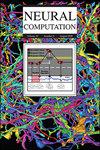视觉感知中感官输入和预测的快速重加权。
IF 2.1
4区 计算机科学
Q3 COMPUTER SCIENCE, ARTIFICIAL INTELLIGENCE
引用次数: 0
摘要
最近有一种引人注目的感知现象被描述出来,人们报告说在一个平稳移动的物体的位置上看到突然的跳跃(“位置重置”)。在这里,我们表明这种现象可以在递归贝叶斯估计的框架内理解为由瞬态增益变化引起的,暂时优先考虑感官输入而不是预测信念。从这个角度来看,位置重置揭示了人类视觉感知中快速自适应精确加权的能力,并为研究感官增益控制的时间和灵活性提供了一个可能的测试平台。本文章由计算机程序翻译,如有差异,请以英文原文为准。
Rapid Reweighting of Sensory Inputs and Predictions in Visual Perception
A striking perceptual phenomenon has recently been described wherein people report seeing abrupt jumps in the location of a smoothly moving object (“position resets”). Here, we show that this phenomenon can be understood within the framework of recursive Bayesian estimation as arising from transient gain changes, temporarily prioritizing sensory input over predictive beliefs. From this perspective, position resets reveal a capacity for rapid adaptive precision weighting in human visual perception and offer a possible test bed within which to study the timing and flexibility of sensory gain control.
求助全文
通过发布文献求助,成功后即可免费获取论文全文。
去求助
来源期刊

Neural Computation
工程技术-计算机:人工智能
CiteScore
6.30
自引率
3.40%
发文量
83
审稿时长
3.0 months
期刊介绍:
Neural Computation is uniquely positioned at the crossroads between neuroscience and TMCS and welcomes the submission of original papers from all areas of TMCS, including: Advanced experimental design; Analysis of chemical sensor data; Connectomic reconstructions; Analysis of multielectrode and optical recordings; Genetic data for cell identity; Analysis of behavioral data; Multiscale models; Analysis of molecular mechanisms; Neuroinformatics; Analysis of brain imaging data; Neuromorphic engineering; Principles of neural coding, computation, circuit dynamics, and plasticity; Theories of brain function.
 求助内容:
求助内容: 应助结果提醒方式:
应助结果提醒方式:


